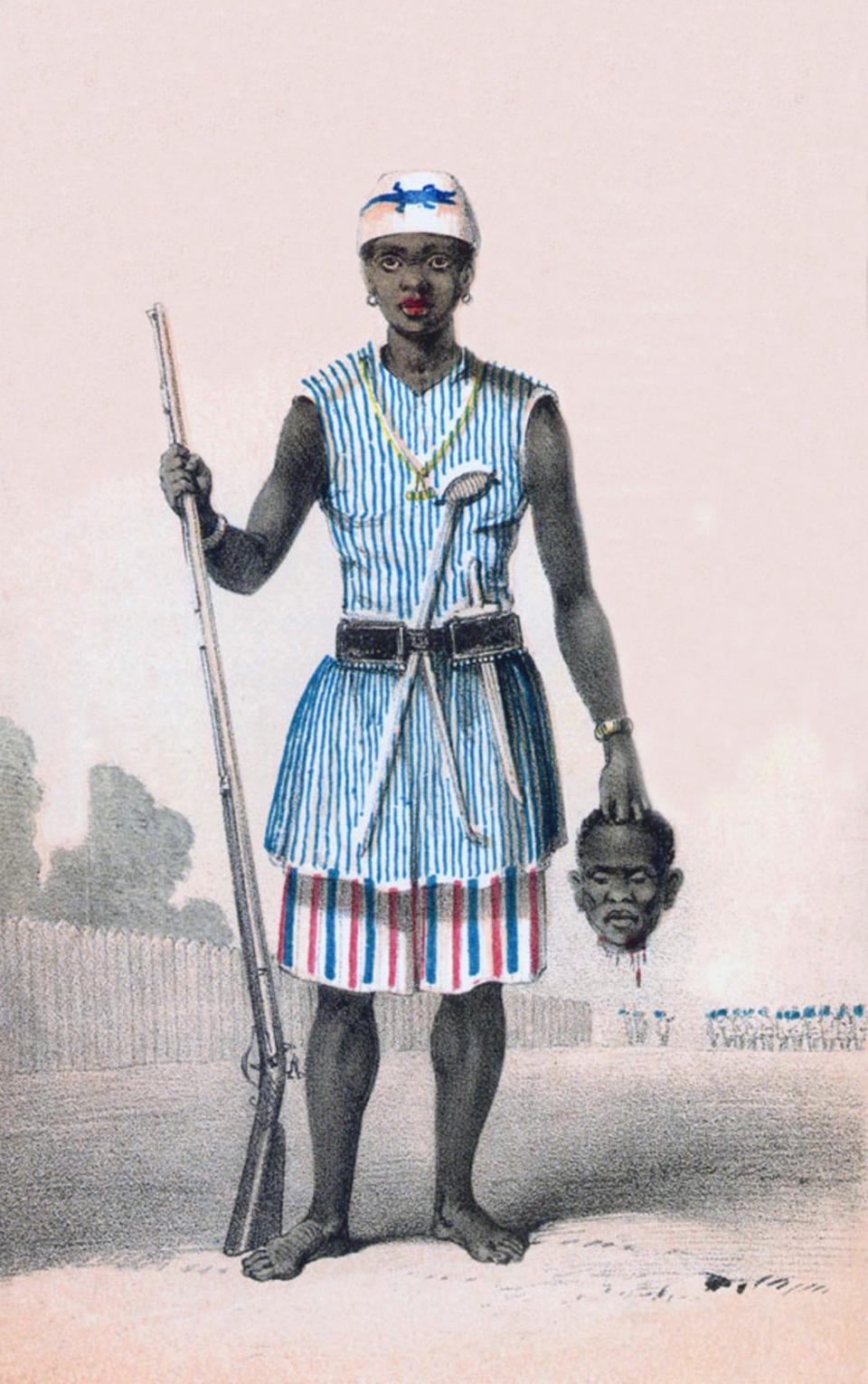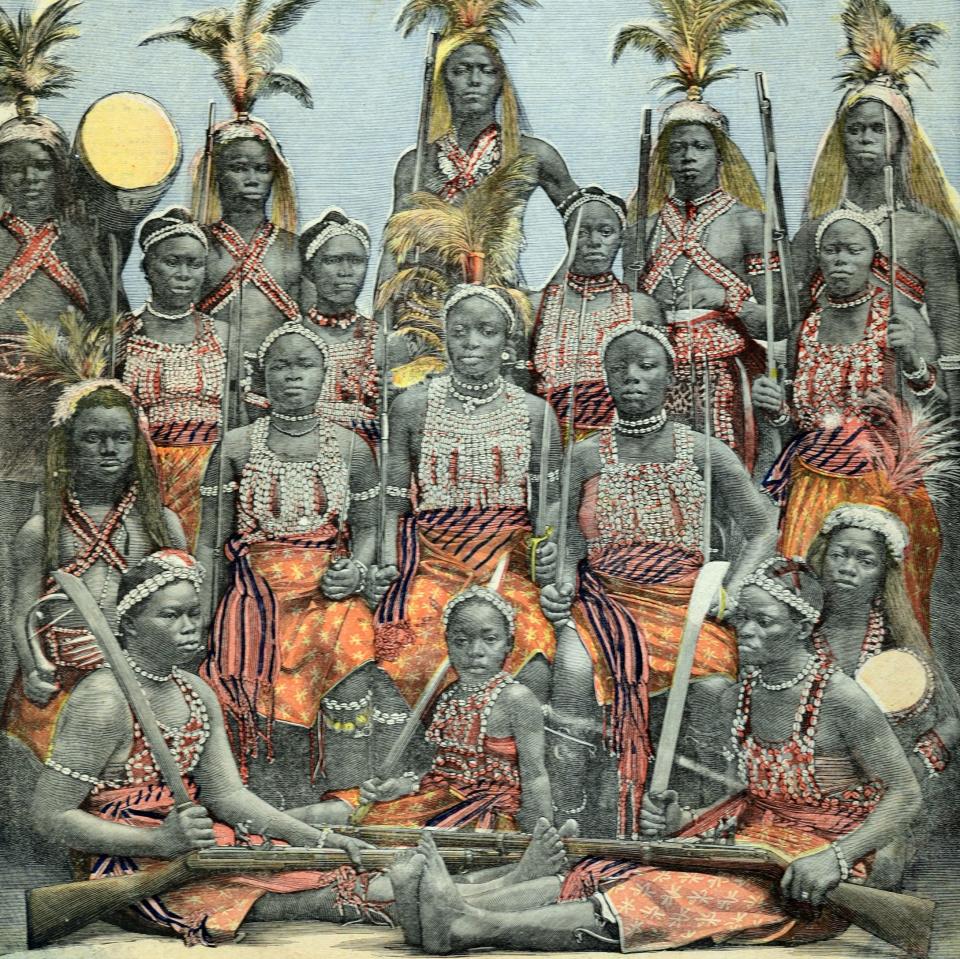Decapitations and death by nail talon: the lethal all-female militia that inspired The Woman King

In a scene from the new $50m historical epic The Woman King, Viola Davis as Nanisca, the revered Agojie general, emerges silently from a sea of tall grass armed with a machete — followed by her all-female soldiers — like a leopard hunting her prey.
She is hunting men from the Oyo Empire — a powerful Yoruba empire of West Africa — responsible for a recent mass kidnapping and, though brief, the scene is a bloody yet graceful display of the strong, fast and ruthless all-female group of warriors.
Directed by Gina Prince-Bythewood, the film is loosely inspired by the real kingdom of Dahomey which existed within present-day Benin (which occupies a sliver of the coast between Nigeria and Togo) between 1600 and 1904.
Set in the 1820s, screenwriter Dana Stevens based the script on a story Maria Bello wrote after visiting Benin in 2015, about a female general who trains the next generation of warriors to fight their enemies. They reside in a kingdom ruled by the kind yet assertive King Ghezo (played in the film by John Boyega), where prior to colonial reign, women enjoyed extraordinary liberties and powers outside of being a wife.
But what was the real kingdom of Dahomey like, and did these fierce female warriors actually exist?
The social norms in Dahomey were unique and gender inclusive. Both men and women were appointed to important roles, including the title of Kpojito, or Woman King, which King Ghezo bestowed upon Nanisca in the film.
The Agojie were the world’s only documented all-female army, who conquered neighbouring tribes or resisted European forces. They were known for their technical skill, fearlessness and tendency to behead anyone who defied them.
Oral and written accounts of their origin are scarce, and mostly based off the experiences of European slave traders and colonists. According to Smithsonian Magazine, one theory even describes them as elephant hunters, while historians suggest they may have originated under Queen Hangbè, who was protected by female bodyguards when she reigned alongside her twin brother in the 1700s.
But when the French seized Benin in 1894, only 50 of these 2,000 female warriors survived, while their history was almost erased by colonial education. Over the past few years, Benin researchers have been trying to track down descendants of the Agojie. Interviewed by the Washington Post, these descendants spoke of their grandmothers strangling the enemy with their “long nails” — something the film's charismatic lieutenant Izogie, played Lashana Lynch, files and uses in battle — and preferring weapons over housework.

Before directing The Woman King, Prince-Bythewood and the film’s production designer Akin McKenzie conducted rigorous research about the Agojie and Dahomey, especially the journals written by missionaries who wrote positively about the Kingdom.
They stumbled across a Washington Post article by a Princeton politics professor, Leonard Wantchekon, who is directly related to a member of the Agojie. He argued that describing these women to ‘Black Amazons’, which is Western terminology, was reducing them to stereotypes.
“What Leonard brought, which we should all want, is history told in the right way from those who lived it as opposed to those who had an absolute desire to dehumanise us and falsify history,” Prince-Bythewood said in an interview with the Los Angeles Times.
“It’s a misconception that Dahomey was nothing other than a state involved in the slave trade. It’s a narrative built by Europeans to present the state as barbaric,” Wantchekon added, who was also a historical consultant on the film. It’s why he dismisses the glorification of their battle exploits and mercilessness. "That's just what soldiers did," he told the BBC.

The village where Wantchekon grew up, to the west of Abomey — a city in southern Benin — used to be the site of the Amazons’ training camp. Throughout The Woman King you see a headstrong recruit Nawi (Thuso Mbedu) throw herself into some of training processes aimed to resocialise women to the demands made of them by military life, which rendered them celibate. It’s the journey captive-turned-soldier Amenza (Sheila Atim) also embarks before serving as a spiritual “Vodun” guide among her sisters in arms. Voodoo was and still is a major religious practice in Dahomey and present day Benin.
Between 1849 and 1950, English naval officer Frederick Forbes journaled his own observations whilst on two missions called Dahomey and the Dahomans. “The Amazons are not supposed to marry, and, by their own statement, they have changed their sex. ‘We are men,’ they say, ‘not women.’ All dress alike, diet alike, and male and female emulate each other: what the males do, the Amazons will endeavour to surpass.”
This theme of the Agojie outdoing their male counterparts is demonstrated in the film, especially through one of the army exercises Italian priest Franceso Borghero described in 1861, where thousands of women scaled 120 metre-high thorny acacia bushes barefoot without a whimper — one of the challenges Nawi painfully fights her way through on screen.

But what about the warriors themselves? According to Smithsonian Magazine, women by the names Nanisca and Nawi do appear in historical accounts of Dahomey. But their on-screen counterparts do not necessarily follow their historical journeys entirely. Take Nanisca, for example. Jean Bayol, a French naval officer who visited Abomey in December 1889, wrote that he watched the new teenage recruit execute a prisoner with a sword for the first time, then “squeezed the blood off her weapon and swallowed it.” Yet three months later, after the First Franco-Dahomean War began in 1890, Bayol found Nanisca dead. She doesn’t seem to become the powerful general Davis portrays in The Woman King.
Wantchekon believes the Agojie still have the capacity to be role models today. “Where a profession that's critical for society is dominated by men, well, why don’t we insert a unit of elite women to work side by side with men? To be equal to men.”
The Woman King is in cinemas now

